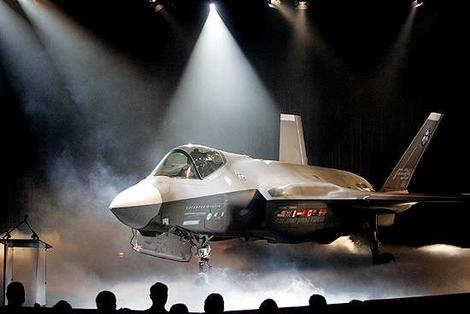
(Reuters) - The top U.S. arms buyer said he was dissatisfied with cost overruns in the United Technologies Corp Pratt & Whitney engine powering the multinational F-35 fighter jet.
But Ashton Carter, undersecretary of defense for acquisition, repeated Pentagon opposition to funding an alternate engine being developed by General Electric Co and Britain's Rolls-Royce Plc.
"I'm not happy, as I am with so many parts of all our programs, with (the P&W engine's) cost performance so far," Carter told the House of Representatives Appropriations subcommittee on defense on Wednesday. "We need to drive the costs down."
At stake is potential engine business that the Government Accountability Office, Congress's audit arm, puts at $62 billion in 2002 dollars. The Project on Government Oversight reckons that this equals about $75 billion in 2010 dollars.
The Pentagon ordered GE and Rolls-Royce to stop building the alternate engine last month, but the companies said they would spend their own money to keep it alive. The Pentagon has sought for five years to kill the engine as an economy measure.
Carter, in reply to a question from Representative Norm Dicks, a Washington Democrat, said costs were growing too fast for both the engine and the F-35 Joint Strike Fighter aircraft, being built by Lockheed Martin Corp. The air frame's cost overruns were proportionately higher than the engine's, Carter added.
Pratt & Whitney said in response that a U.S. Defense Department "Joint Assessment Team" in 2009 had confirmed that its cost-reduction plan was "executable and we are on plan."
The company's most recent contract proposal for its next batch of engines offered a 16 percent savings over the previous batch, added Stephanie Duvall, a spokeswoman. It also moved to a fixed-price contract from an earlier "cost-plus" deal that covered expenses plus a profit no matter how it performed.
GE has said its F136 engine is meeting or beating expectation while Pratt & Whitney's had cost overruns of $3.4 billion. Pratt has attributed $2.7 billion of the overruns to changes requested by the Pentagon.
Representative Jim Moran, a Virginia Democrat, told Carter that the alternate engine is "not a dead issue."
"It still has substantial support," Moran said. Separately, Moran told Reuters that Representative Howard McKeon, chairman of the House Armed Services Committee, would seek to renew the alternate engine's funding in the House's version of the fiscal 2012 defense spending bill.
A spokesman for McKeon, a California Republican, could not immediately confirm plans to put funding back.
"However, it is no secret that Chairman McKeon believes that funding the F136 engine would provide for greater accountability, better performance, and lower costs over the life of the Joint Strike Fighter program," the spokesman, Josh Holly, said in an email.
The Pentagon calculates it would cost $2.9 billion more to develop the alternate engine so it could compete against Pratt & Whitney's, which already powers early F-35 production models.
"Our analysis does not show the payback," Carter told the subcommittee. He added that "people of good will come to different conclusions on this issue."

No comments:
Post a Comment
no offensive and abusive language please